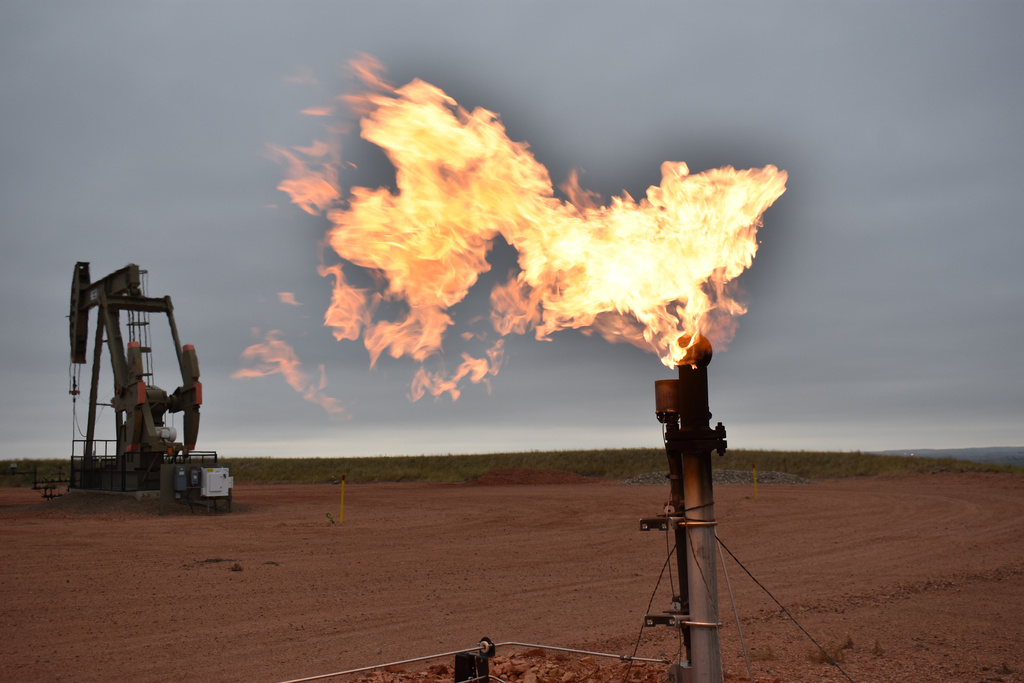Supreme Court Upholds Biden’s Emission Regulations \ Newslooks \ Washington DC \ Mary Sidiqi \ Evening Edition \ The Supreme Court has upheld two Biden administration regulations targeting methane and mercury emissions, despite challenges from industry groups and Republican-led states. The decision leaves in place stricter rules for oil and gas producers and coal-fired power plants aimed at combating climate change. The court is still considering a challenge to another EPA rule addressing coal plant carbon emissions.

Supreme Court Leaves Biden’s Methane and Mercury Regulations in Place: Quick Looks
- Supreme Court Decision: The Supreme Court upheld Biden’s regulations for methane and mercury emissions without noting any dissents.
- Regulations Background: The regulations target methane from oil and gas production and mercury from coal-fired power plants, aiming to reduce harmful pollutants.
- Biden’s Broader Climate Agenda: These regulations are part of Biden’s comprehensive climate action strategy, including incentives for electric vehicles and stricter vehicle emissions standards.
Deep Look
The Supreme Court left in place two key Biden administration environmental regulations on Friday, rejecting industry attempts to block these rules. The upheld regulations target methane and mercury emissions, two significant contributors to pollution and climate change. Industry groups and several Republican-led states had petitioned for an emergency block, but the court provided no detailed reasoning and noted no dissents.
These regulations are a crucial part of President Joe Biden’s broader strategy to address climate change. His efforts encompass financial incentives to promote electric vehicles, new infrastructure standards, and tightened emission standards for cars and trucks. The two regulations that were upheld focus on reducing methane emissions from the oil and gas sector, as well as mercury and other hazardous air pollutants from coal-fired power plants.
Key Regulations Upheld
The upheld methane rule imposes stricter controls on emissions from the oil and gas industry. Methane, the primary component in natural gas, is a greenhouse gas far more potent than carbon dioxide over a shorter timeframe. The new regulation builds on existing technology and practices already implemented by some oil and gas companies and requires comprehensive measures to find and fix methane leaks at well sites across the United States.
Importantly, the rule does not just apply to new oil and gas wells but also targets existing ones. It places specific requirements on smaller wells, which account for only about 6% of the nation’s oil and gas output but are responsible for nearly half of the methane emissions. These smaller wells will be mandated to identify and address methane leaks, and energy companies must also gradually eliminate routine flaring—a process in which natural gas produced alongside oil is burned off, releasing methane into the atmosphere.
The second regulation addresses mercury and toxic emissions from coal-fired power plants. It represents a continuation of earlier environmental efforts, updating guidelines that have not been revised for over a decade. The mercury rule, initially put in place over ten years ago, was partially rolled back during the Trump administration. The Biden administration reversed that decision and updated the standards further to ensure more stringent controls over hazardous emissions, such as mercury, which is known to affect the nervous system, kidneys, and fetal development.
Opposition and Legal Challenges
Industry groups and a number of states opposing these rules argue that the Environmental Protection Agency (EPA) exceeded its authority, setting unrealistic standards that could harm the energy sector and impact the economy. Specifically, those against the methane rule described it as an “attack” on the industry, asserting that the standards are impossible to achieve. They also argued that emissions from existing wells were not significant enough to justify such strict oversight, suggesting that the measures could hinder industry operations.
Regarding the mercury regulation, industry representatives and states claimed that emissions from coal-fired power plants had already been sufficiently reduced and that stricter standards would only lead to the closure of additional coal plants. However, the EPA maintains that these updates are crucial for public health, particularly to protect vulnerable populations from exposure to hazardous pollutants.
The Biden administration and the EPA defended the rules as well within the agency’s authority, emphasizing that they are based on scientific evidence and critical for mitigating climate change and protecting public health. The EPA’s spokesperson, Remmington Belford, stated that both the methane and mercury rules are firmly grounded in the Clean Air Act’s provisions, ensuring that the public’s well-being remains a priority. Belford highlighted that the methane rule, in particular, would build on innovative technologies already being used by several states and companies, bringing broad health and climate benefits to Americans.
Broader Context and Supreme Court’s Environmental Stance
The Supreme Court’s decision to uphold these regulations comes against the backdrop of other significant rulings that have been less favorable to the Biden administration’s environmental agenda. In 2022, the court issued a landmark ruling that limited the EPA’s authority to regulate carbon dioxide emissions from power plants. Additionally, the court previously halted the EPA’s “good neighbor” rule, which was designed to help manage air pollution crossing state lines.
The ongoing legal battle reflects the complexity of climate regulation in the United States, where federal, state, and industrial interests often clash. Currently, the Supreme Court is still considering challenges to a third EPA regulation targeting carbon emissions from coal-fired power plants, which will be pivotal for Biden’s broader climate strategy. Environmental groups are closely watching these deliberations as the administration attempts to push forward with its vision for curbing emissions from some of the country’s most polluting industries.
Public Health and Environmental Advocacy
Environmental advocates have largely welcomed the Supreme Court’s decision. David Doniger, a senior attorney with the Natural Resources Defense Council (NRDC), called the methane and mercury rules critical safeguards for public health. Doniger praised the Supreme Court’s order and expressed hope that it would also uphold the EPA’s efforts to regulate carbon emissions from coal plants, which is another essential part of addressing climate change effectively.
Methane regulations are seen as a significant step toward achieving the U.S. target of cutting greenhouse gas emissions. Methane is approximately 80 times more potent than carbon dioxide over a 20-year period, meaning that rapid reductions in methane emissions are critical for slowing global temperature rise in the short term. Environmentalists argue that implementing stricter methane controls is one of the most effective measures for curbing near-term climate impacts while broader initiatives to reduce carbon dioxide emissions take longer to yield results.
The regulation on mercury and other toxic emissions from coal-fired power plants aims to limit exposure to pollutants that disproportionately affect communities living near industrial facilities. Mercury contamination, for example, poses severe risks to human health, including developmental delays in children and adverse effects on the nervous system and organs. By tightening these standards, the Biden administration aims to reduce environmental health disparities and ensure that industries meet modern standards for pollutant control.
Looking Ahead
The Biden administration’s broader climate agenda, which includes financial incentives for electric vehicles, stricter tailpipe emissions standards, and investments in renewable energy infrastructure, faces a challenging road ahead. While the court’s decision to uphold these two regulations represents a win for environmental advocates, the challenges to other climate policies—including carbon regulations for coal plants—are still pending.
The industry opposition remains vocal, emphasizing the costs and feasibility challenges of meeting these new standards. With President Biden positioning himself as a global leader on climate change, the outcomes of these regulatory battles will have significant implications not only for domestic energy policy but also for the U.S.’s international commitments under agreements like the Paris Climate Accord.
The administration’s ongoing efforts to curb emissions from major sources, such as coal plants and oil wells, highlight its approach to climate policy that balances regulatory oversight with technological advancement. However, success in implementing these regulations ultimately depends on navigating the legal and political hurdles that continue to arise from both industry stakeholders and opposing political figures.







